La Rapman BCN3D+ con doble extrusor lista
26 02 2015 Comments : Comentarios desactivados en La Rapman BCN3D+ con doble extrusor listaCategories : Tecnologia de Fabricación de Prototipos/Rapid prototyping
by TE Edwards · February 5, 2015
Something3D says they’ve created the first full color, FFF 3D printer, and they call it the ST3D Chameleon. The company says the ST3D Chameleon is a package of innovative hardware, software and a user friendly GUI which lets users print their models in full color, and not just color, but with “intricate textures” as well.
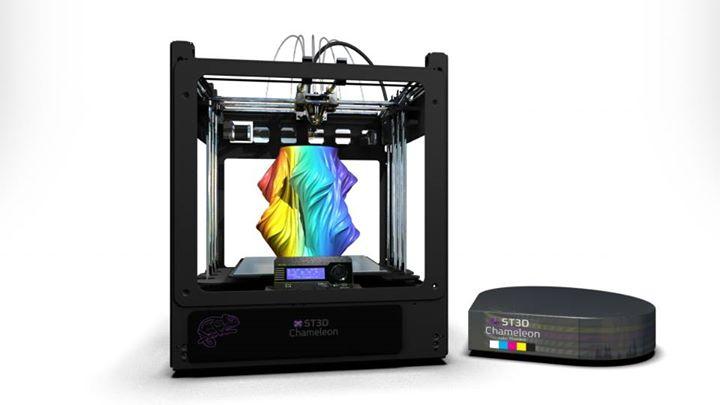 Something3D says the hardware configuration of the Chameleon is very like that of their second generation machines, but with a twist. The Chameleon prints objects with CMYBW (Cyan, Magenta, Yellow, Black and White) filaments through a single, proprietary, patent-pending nozzle.
Something3D says the hardware configuration of the Chameleon is very like that of their second generation machines, but with a twist. The Chameleon prints objects with CMYBW (Cyan, Magenta, Yellow, Black and White) filaments through a single, proprietary, patent-pending nozzle.
According to Something3D, their latest model can print the outer shell of an object in full color at a resolution of 0.5 millimeter per color change.
“This ground breaking printer will take the 3D printing world from the ‘black and white’ era to the ‘full color’ world, unleashing unlimited design-and-create possibilities,” says Dotan Koskas of Something3D.
Itzik Molcho, the CEO of Something3D, says he and the company’s co-founders, which include Molcho and his partner Koskas, the system’s designer, are certain their line of 3D printers will find a foothold in markets outside of their current home in Israel.
Something3D is among the few manufacturers of desktop 3D printers anywhere – and they’re the only ones in Israel. Their previous line of printers feature four printing extruder heads which allowed for the production of objects with four different materials – or in multiple colors – but this latest line is said to produce the much sought-after “full color” capability.
“That’s the kind of thing you usually find only in very high-end printers from companies like Stratasys,” says Molcho.
Koskas, a graphic designer and veteran of the animation and television industries, said it was his involvement in building 3D printers for the past five years which led to the development of Something3D’s first printer a year ago.
“Most of our customers have been in Israel, which we see as a ‘beta site’ for what we’re doing,” Molcho says. “We believe that our unique approach will be in demand elsewhere as well.”
With their new Chameleon, the company offers a printer with a build volume of 300 x 300 x 340 mm, a heated build platform, USB 2.0-3.0 to Mac, PC and SD card connectivity, 50 micron layer thickness and 0.5 mm wall thickness capability, a print speed of 70-100 mm/s and a 1-year warranty. And the price? It’s intriguing as well at $7350.
We’ve seen full color 3D printers in the past. In fact 3D Systems recently acquired BotObjects, likely for their technology which is being integrated into their CubePro C 3D Printer. Additionally we’ve covered a company in the past called Spectrom 3D who produces a filament dying attachment for nearly any FFF/FDM 3D printer. It will be interesting to see how Something3D’s technology compares, as full-color FFF 3D printing seems to be about to take off.
Koskas says the ST3D Chameleon will be shipping within 8 weeks and that the company is taking pre-orders now on their website.
Do you think it’s possible to create a real, “full-color” 3D printer for the kind of price ST3D are offering? Let us know in the Something3D ‘Full Color’ FFF Printer forum thread on 3DPB.com
fuente: http://3dprint.com/42740/something3d-full-color-fff-printer-is-on-the-way/
Estamos trabajando en el montaje de la BCN3D+ dual extrusor. En breve os informaremos de las primeras impresiones.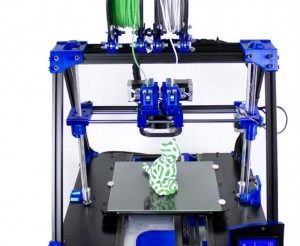
by Ramon
There are loads of materials available, but when it comes to polymeres (like plastic), two types of filament are most popular; PLA and ABS plastic. But what are the differences? Which one is best? To answer these questions, first let me tell you a bit more about them.
PLA is a bio-degradable type of plastic that is manufactured out of plant-based resources such as corn starch or sugar cane. This is why it is called ‘the green plastic’. Be sure to throw it in a filament recycler and you’re as green as can be. It’s widely used for packaging, such as food products, but of course you can also use it to print!

ABS plastic is made out of oil-based resources and it has a much higher melting point than PLA plastic. It’s also stronger and harder. Because of these particular features, ABS is widely used for purposes ranging from car bumpers and motorcycle helmets to musical instruments, golfclubs and Lego.
So, which is better?
| PROS | CONS |
|---|---|
| + Can be printed on a cold surface | – Can deform because of heat (like a cassette in a car) |
| + More environmental-friendly | – Less sturdy (than ABS) |
| + Shinier and smoother appearance | |
| + Smells sweet when being print =) | |
| + No harmful fumes during printing | |
| + Higher 3d printer speed | |
| + More detail |
| PROS | CONS |
|---|---|
| + Very sturdy and hard | – Made out of oil, so more damaging to the environment |
| + Suitable for machine or car parts | – Deformes when not being print on a heated surface |
| + Higher melting point | – Hot plastic fumes when printing |
| + Longer lifespan | – Therefore, you need ventilation |
| – More difficult to print | |
| – Not suitable for using with food |
A company that’s making parts for machines will be better off when choosing ABS, because of its lifespan, its strength and its higher melting point. On the other hand, an artist who is making 3d models at home, will be better off choosing PLA because of its ease-of use, its appearance and because you don’t need ventilation.
But, as you might have noticed, there are a few drawbacks to using either of the plastics. For instance, let’s say you want to print some new cups and dishes at home. If you use PLA, you can’t put it in the dishwasher since it would deform through the heat. ABS is not an option either, since it’s oil-based and therefore cannot be used for holding food or beverages. Read this article for more info on ABS.

In conclusion, both ABS and PLA plastic have ups and downs, it depends largely on what and where you were planning on printing. Hopefully they invent a new kind of plastic one day that’s cheap, doesn’t do harm to the environment and is suitable for all possible jobs. Until that time, check out these other possible 3d printing materials.
Así veíamos ayer en Diario de Gastronomía y nos lo explicaba muy bien el Chef Paco Morales en este vídeo.
Estas impresoras, las habíamos enseñado ya en marketing gastronómico, hace 3 años! Aquí podéis recordar ese post, lo que si es cierto, que aunque sabía que existía, no la había visto utilizar. Esta impresora fue inventada por Marcelo Coelho del MIT Media Lab.
El MIT (El Instituto Tecnológico de Massachusetts, MIT, del inglés Massachusetts Institute of Technology) Nos argumenta el invento, comentado que la comida es uno de los ingredientes fundamentales de la vida. No podemos pasar un día sin que antes experimentemos el tipo de alimentos que comemos y cómo nos los comemos están estrechamente relacionados con nuestras prácticas culturales, los entornos físicos y de salud personal. No obstante, cocinamos cada vez menos.
Mientras que los medios digitales han transformado todas las facetas de la sociedad, las tecnologías fundamentales que encontramos en la cocina de hoy proporcionan sólo mejoras incrementales a las herramientas que hemos estado utilizando durante cientos de años. Es por esto que han desarrollado varios prototipos y diseños conceptuales que combinan tecnologías de fabricación digital y la comida.
Cada diseño aborda un proceso fundamental que está en el centro de la cocina, el sabor, la mezcla de los ingredientes, la transformación física y química de estos ingredientes en nuevos compuestos y, finalmente, su modelado en estéticamente agradables y deliciosas texturas y formas.

Este Digital Chocolatier es una máquina que permite al usuario, rápidamente diseñar y probar diferentes tipos de dulces con chocolate. En su interfaz digital el usuario puede combinar los ingredientes que están en los contenedores del carrusel. Al salir la mezcla, ésta se enfría rápidamente para poner duro el chocolate para que se pueda comer en el momento. Se pueden almacenar recetas para utilizarlas posteriormente como vemos a continuación.


El Digital Fabricator es una impresora en 3D que imprime alimentos, que funciona almacenando, mezclando precisamente, depositando y cocinando capas de ingredientes. Todo el proceso comienza cuando se depositan los alimentos en los vasos, los cuales los refrigeran. Luego estos entran en un mezclador y “se imprimen” con una precisión inferior al milímetro. El alimento se calienta o se enfría por la cámara de Fabricator o en los tubos de calentamiento y enfriamiento situadas en la cabeza de impresora. Este proceso de fabricación no sólo permite la creación de sabores y texturas que sería completamente inimaginable a través de otras técnicas de cocina, sino que también, a través de una interfaz de pantalla táctil y la conectividad a Internet, permite a los usuarios tener un control absoluto sobre el origen, la calidad, el valor nutricional y el sabor de cada comida.


El Robotic Chef es un brazo mecánico que está diseñado para transformar un alimento físicamente y químicamente, como un filete, pescado o una fruta.

Virtuoso Mixer Concept
El Virtuoso Mixer es una máquina, que está compuesta por 3 capas que rotan como un carrusel dando la posibilidad al chef de mezclar eficientemente una gran variedad de ingredientes y experimentar con sus sabores y texturas.

fuente: http://marketingastronomico.com/las-impresoras-3d-llegan-a-la-gastronomia/
 What if you could just print light on whatever you wanted? We’re watching 3D printing make progress in nearly every arena, so using it for creating one of the most basic needs we have on a daily basis seems only logical.
What if you could just print light on whatever you wanted? We’re watching 3D printing make progress in nearly every arena, so using it for creating one of the most basic needs we have on a daily basis seems only logical.We’ve long been using creations of light based on inventions from historical geniuses and technological giants. Today though, as 3D printing advances, you will be headed in the direction of printing your own lighting with the help of US-based Rohinni and their new product, Lightpaper.
While we aren’t quite ready to unscrew all the lightbulbs in the office and throw them out, the idea of replacing them eventually with thin sheets of 3D printed light is a stunning consideration.
 With 3D printing being conducive to embedding a multitude of different technologies and electronics, 3D printing with light should prove to offer new innovation and flexibility for manufacturers. While Rohinni does have mild competition in the area, they do have one completely unique factor: Their product is razor thin. And flexible. And 3D printable.
With 3D printing being conducive to embedding a multitude of different technologies and electronics, 3D printing with light should prove to offer new innovation and flexibility for manufacturers. While Rohinni does have mild competition in the area, they do have one completely unique factor: Their product is razor thin. And flexible. And 3D printable.
According to Rohinni, the emergence of printable light is on par with 3D printing in terms of new possibilities and application potential. With a number of different mindblowing and innovative methods used to merge technologies with 3D printing and electronics, this form of lighting, which can be produced rapidly and affordably, could offer use and advancement in various applications for consumer products, and specialized areas such as automotive, for headlights.
They are the only company working to 3D print paper using an innovative method combining ink and tiny LEDs which are printed out on a conductive layer and then sandwiched between two other layers, lit up with LED current.
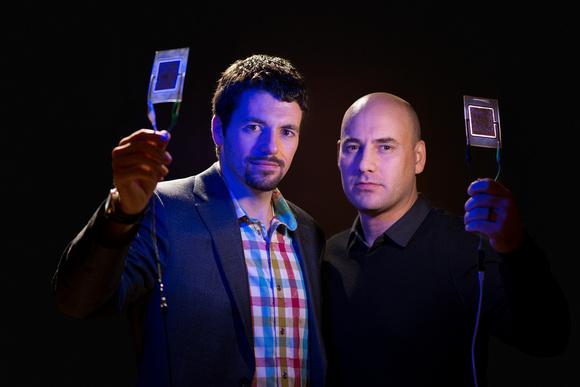 Light goes hand in hand with technology, and often creates that wow factor because, quite simply, it catches the eye. Rohinni is working to spotlight their technology in a bid to gain the attention of industry movers and shakers who would benefit from its applications.
Light goes hand in hand with technology, and often creates that wow factor because, quite simply, it catches the eye. Rohinni is working to spotlight their technology in a bid to gain the attention of industry movers and shakers who would benefit from its applications.
OLED (organic light emitting diodes) technology is a competing force for this product, in their use of LED technology in a series of thin, light emitting films, most commonly used to power televisions these days. But Rohinni’s eventual mainstream direction will be for backlighting for gadgets and everyday objects.
With the goal for Lightpaper to be available to the hobbyist market eventually, 2015 is the target date to bring the 3D printed light source to the commercial and industrial marketplace. They are currently still working to streamline and perfect the product.
Is this something you have thought about that would work with the technology of 3D printing? What do you think this will be useful for in particular? Tell us your thoughts in the World’s Thinnest Light forum over at 3DPB.com.
fuente: http://3dprint.com/26679/rohinni-3d-printed-lightpaper/
Este viernes han realizado la exposición de trabajos, los alumnos de la asignatura de prototipos avanzados:
Jonathan Brand is a designer and artist and he’s done something gearheads, motorcycle freaks and 3D printing mavens will love.
Working from his studio on Orange Street in New Haven, CT, he’s printed out an entire, full-sized replica motorcycle.
It’s based on a classic 70’s Honda CB 500, and it’s built from translucent plastics with his pair of Ultimaker 3D printers.
And it’s amazing.
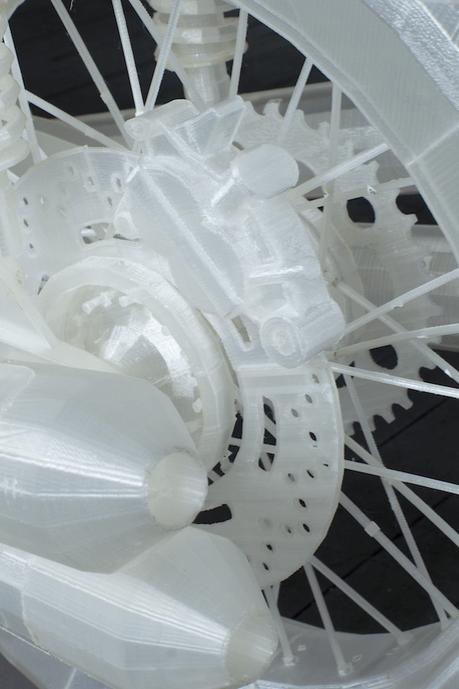 Brand says that when he was living in Brooklyn and looking to buy an actual, working Honda motorcycle, he settled on the idea of buying a CB. He said that when he and his family decided to move out of the city, he was buying one to ride, but his plans changed.
Brand says that when he was living in Brooklyn and looking to buy an actual, working Honda motorcycle, he settled on the idea of buying a CB. He said that when he and his family decided to move out of the city, he was buying one to ride, but his plans changed.
But the fact that the birth of his son – and the fact that he admits to being slightly accident prone – made him decide a plastic version of a motorcycle was a better and safer way to spend his time and energy.
Born in Sarnia, Ontario, Canada, Brand completed a BA from the University of Guelph, Ontario, and then finished up his master’s degree course work at Yale University. .
According to Brand, he spent quite a lot of time on the project, and that creating such accurate, usable parts involved some major hurdles.
The artist says that while he’s only been working with 3D printers for about five years, his initial experience building a Cupcake 3D printer has served him well as he took on the motorcycle project.
“If you have a lot of money, you can get a pretty robust and reliable printer, but the material still seems to be a limitation,” he added. “The biggest problem I’ve had is getting reliable quality printing materials in the US. I’d really like to experiment with a resin based printer, but for now it’s just too expensive for the large scale work I’m doing.”
To build the Honda piece, Brand used his two Ultimaker 3D printers, Rhino, Netfabb, Geomagic, Kisslicer, 3D Studio Max and Adobe Illustrator.
Accomplishing the design means working with heavy stock coated with a matte inkjet print varnish to build his initial forms, cutting the parts out by hand or with a vinyl cutter which uses a laser eye for registering the printout, and then printing and cutting each model piece by himself. He adds that the process is roughly analogous when he gets to the 3D printing stage, as the finished product is printed in small sections and glued together piece-by-piece.
And he’s convinced what he’s come up with is art and not engineering.
“I personally think it’s art, because I have a lot of respect for engineers,” Brand said. “My education is in art. I had an engineer tell me that if I knew what I was doing (from an engineering perspective) I’d never make my work, because I’d know beforehand that it wouldn’t work. I have a factory of one.”
There’s art, and then there’s art and engineering, and artist Jonathan Brand’s fully 3D printed motorcycle fulfills both categories rather nicely. What do you think about this melding of art and reverse engineering? Please let us know in the Jonathan Brand 3D Printed Motorcycle forum thread on 3DPB.com.
—
Artist Jonathan Brand says he started out to buy himself a motorcycle, but ended up building one for himself that was a tad less dangerous after the birth of his son. Brand, a gearhead, technician and motorcycle fan, used a pair of Ultimaker 3D printers to make an amazingly accurate and full-sized replica of the bike he once wanted to buy, a 70’s Honda CB 500. It took more than a year to complete, but the result is a translucent, ghostly and magnificent in every way. If you want to read the whole story and see the incredible photos of the finished product, you can check it out here: http://3dprint.com/35429/jonathan-brand-3d-printed-motorcycle
fuente: http://3dprint.com/35429/jonathan-brand-3d-printed-motorcycle/
Back in August, we reported on the implantation of the world’s first 3D printed vertebrae, and it was surely a sign of things to come from the medical field. Usually once one procedure is successfully completed, other doctors and other hospitals throughout the world begin taking notice and start to consider using these same practices. Now, yet another patient has been successfully treated with 3D printed vertebrae, in a “first of its kind” surgery that took place on December 3 at the The First Affiliated Hospital located at the Zhejiang University School of Medicine in Hangzhou, China.
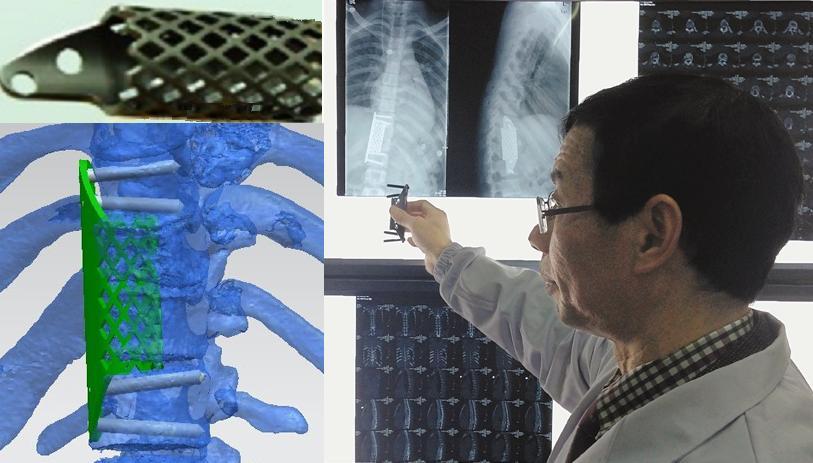
fuente http://3dprint.com/30512/3d-printed-thoracic-vertebrae/